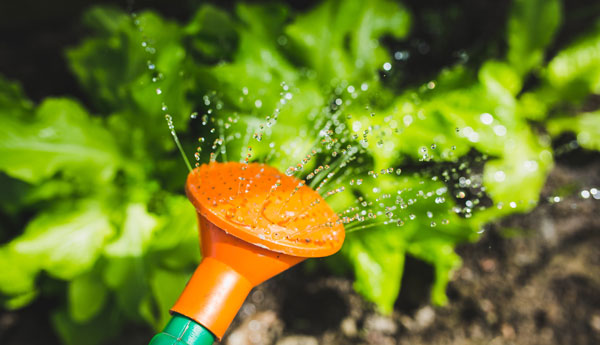
Okay, so let me start by saying, I know what you’re thinking. If I stumbled across an article like this on the internet, my first thought would be “Seriously?! A DIY rain barrel?? Step one, buy barrel, step two, collect rain. How hard can it really be?” While that would be a perfectly adequate rain barrel, hear me out, ’cause I guarantee you can do one better.
So what more is there to a barrel than the barrel itself? Well for starters, the collection can be improved. After all, if you’re just relying on how much rain falls into your barrel, you’ll only collect as many inches of water as naturally falls. If you use a larger surface to collect the water however, let’s say a roof, you’ll get a whole lot more. Next you’ll want a way to facilitate removing the water, so you can use it in your garden. As it turns out, a 50+ gallon barrel is a little heavy to tote around the garden by hand. Let’s look at a few ways to accomplish these things below.
Roof Power!
If you picked up on the spoiler in the previous paragraph, congratulations! Turns out, the largest water collection mechanism you’ll ever need already sits roughly six feet above you. In fact, a roof of just 1000 square feet can collect around 600 gallons of water off just an inch of rain. Pretty impressive numbers.
Construction
For your collection mechanism, a 55-gallon plastic barrel tends to work best. While they can be found at your local big-box hardware store for around 100 bucks, chances are you can find one on Craigslist, or Facebook marketplace for about $10. If you do buy it used, make sure you give it a thorough wash or bleaching before pressing it into service. Sure, this water will just being going to your plants, so it’s not life or death, but better safe than sorry. You never know where some of these barrels have been.
Next, cut two 1-inch holes in the barrel–one in the front, about five inches off the bottom, the other on the back, two inches from the top. You can use an inch-wide drill bit for this, an inch-diameter hole saw, or any other device. In the top hole, thread in a ¾-inch-½-inch brass adapter. Screw a short hose onto the ½-inch side, fitted with a small hose screen on the other end. This will serve as an overflow hose, while the screen will prevent any unwanted intruders into your barrel. For the bottom hole, you’ll need four things–a short stretch of ¾-inch coupling pipe (the female end, straight or angled, though a 90-degree is easiest to tighten), a 1-inch flat washer, caulk and a ¾-inch hose bib adapter. If your barrel has a removable top, reach into the barrel for this next step. If not, it will certainly have a removable drain plug you can reach up. Take the coupling pipe and place it on the inside of the hole. Take the hose bib, place the washer around the ¾-inch threads, and begin to screw it into the coupling. Next, push some caulk around the full circumference of the barrel side of the washer. Finish by screwing the hose bib all the way in. If you have only a small drain hole to work with, this is where the 90-degree pipe comes in handy, as you can shove a screwdriver up it to hold it in place. You now have a fully waterproof spigot, through which to draw your water.
Finally, run your gutter to the barrel’s top. If it already has a hole with a removable plug, fantastic! Simply unplug it, place some window screen material across to provide a rough filter, and run your gutter’s downspout right to the hole. You may have to cut this to fit exactly. If there is not a hole already, even better! Now you have an excuse to cut a 4-inch hole into the top of your barrel, and install a downspout adapter, which is a slightly cleaner looking setup. You can, of course, use this method even if the barrel already has a hole. It does make it hard to install a screen, but as most gutters are screened at the top of the downspout anyway, it’s not wholly necessary.
If you have a few downspouts, and a roof with several pitches, place one of these barrels on each spout and you’ll soon have more water than you know what to do with. Trust me, your plants will thank you.
A humble homesteader based in an undisclosed location, Lars Drecker splits his time between tending his little slice of self-sustaining heaven, and bothering his neighbors to do his work for him. This is mainly the fault of a debilitating predilection for fishing, hunting, camping and all other things outdoors. When not engaged in any of the above activities, you can normally find him broken down on the side of the road, in some piece of junk he just “fixed-up.”

Russ says
Be aware that some states have restrictions on the collection of rainwater although it is not illegal to do so in any state.